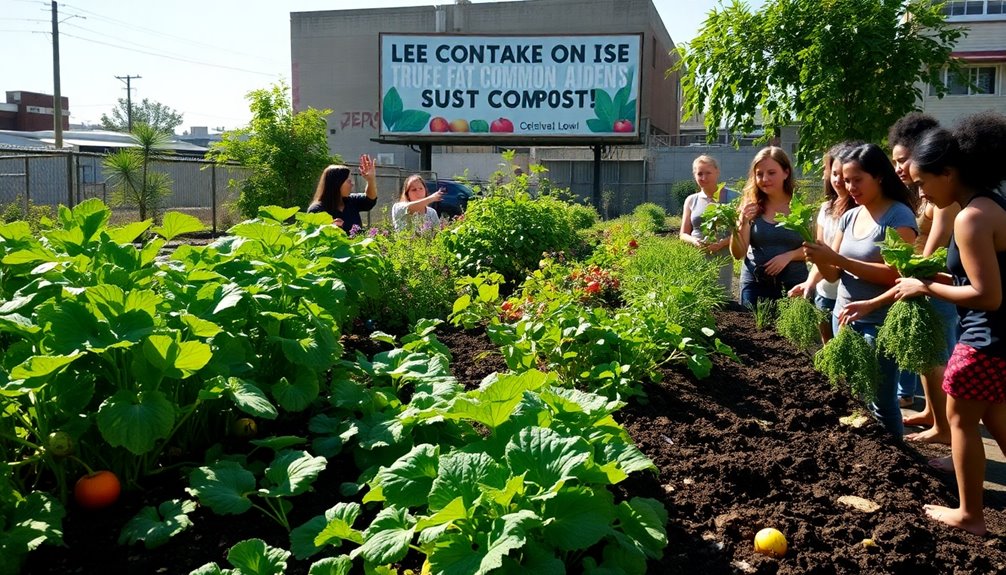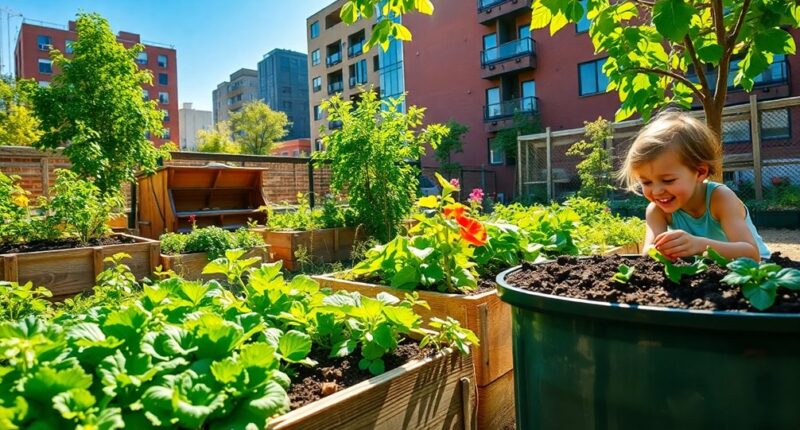Waste-to-nutrition routes turn food waste into valuable resources, benefiting the environment significantly. By composting or repurposing unmarketable produce, you help reduce greenhouse gas emissions and support local economies. This approach not only conserves natural resources but also addresses food insecurity by providing meals for those in need. Embracing these methods fosters a more sustainable and equitable food system. There's so much more to explore about how these practices can transform our communities and environment.
Key Takeaways
- Waste-to-nutrition routes reduce greenhouse gas emissions by diverting food waste from landfills and promoting sustainable practices.
- Anaerobic digestion converts food waste into renewable energy, capturing harmful methane emissions and providing a clean energy source.
- Composting returns valuable nutrients to the soil, enhancing soil health and reducing reliance on chemical fertilizers.
- Redirecting unmarketable produce to food banks alleviates food insecurity while minimizing waste and supporting local economies.
- Engaging in waste recovery initiatives fosters community involvement, contributing to a sustainable food system and job creation.

As you navigate the complexities of food management, it's essential to recognize that reducing food waste isn't just an environmental imperative—it's a pathway to creating nutritious solutions for those in need. By preventing food waste, you're saving valuable resources like land, water, energy, and labor. This means less strain on our planet and a significant reduction in greenhouse gas emissions, primarily generated during production, transport, and distribution.
When you divert food waste from landfills, you're actively cutting down on methane emissions, a potent greenhouse gas that contributes to climate change. By embracing sustainable practices in food management, you're not just fostering local economic growth; you're also supporting a circular economy that conserves natural resources. Every step you take can lead to job creation and improved soil health through nutrient recovery from waste. Additionally, it's important to note that one-third of global food produced is wasted, highlighting the urgent need for effective waste reduction strategies.
Think about the environmental benefits: reducing food waste can conserve agricultural land equivalent to the size of California and New York combined. The energy saved could power 50 million U.S. homes for an entire year.
By engaging in anaerobic digestion, you can capture methane emissions and convert them into renewable energy, while composting food waste returns essential nutrients to the soil, reducing the need for chemical fertilizers.
Moreover, food waste recovery offers a chance to provide meals for millions living in food insecurity. Donating excess food to community sites and food banks not only reduces hunger but also minimizes waste. Unmarketable produce can be redirected to food banks or converted for animal feed, supporting local economies and communities.
As you consider these waste-to-nutrition routes, remember that your actions can help meet broader greenhouse gas reduction goals and enhance food security. By adopting efficient practices and engaging with community initiatives, you contribute to a sustainable food system where everyone can thrive.
Your commitment to waste reduction is a vital step toward a healthier planet and a more equitable society.
Frequently Asked Questions
What Types of Waste Can Be Converted Into Nutrition?
You can convert various types of waste into nutrition, including food scraps, yard waste, and animal byproducts.
For example, composting kitchen scraps returns valuable nutrients to the soil, while anaerobic digestion transforms organic waste into biogas and nutrient-rich digestate.
Additionally, animal byproducts can be processed into fertilizers like blood meal and bone meal, enhancing soil fertility.
How Does Waste-To-Nutrition Impact Local Economies?
Imagine turning yesterday's leftovers into tomorrow's profits!
Waste-to-nutrition impacts local economies by creating jobs, boosting revenues, and reducing costs for businesses. When you upcycle food waste, you not only save money but also contribute to a sustainable community.
These initiatives can yield impressive returns on investment and foster new industries, strengthening local resilience. By embracing these strategies, you're not just fighting waste; you're fueling economic growth in your area.
Are There Any Health Risks Associated With Waste-To-Nutrition Processes?
Yes, there are health risks associated with waste-to-nutrition processes.
If food waste isn't handled properly, it can spread harmful pathogens like salmonella or E. coli. Some waste products contain antinutritional factors that can reduce digestibility and even harm your health.
Additionally, improper processing may lead to allergens in food, posing risks to those with sensitivities.
It's crucial to ensure regulatory compliance to minimize these health threats while utilizing waste effectively.
What Technologies Are Used in Waste-To-Nutrition Systems?
Imagine transforming yesterday's leftovers into tomorrow's meals—sounds like magic, right?
In waste-to-nutrition systems, you've got technologies like insect farming, where crickets and mealworms thrive on organic waste, and solid fermentation, which uses yeasts to convert waste into nutrition.
There's also extracting plant proteins and generating microbial proteins in bioreactors. Mycoproteins from fungi are another innovative option.
Each method creatively turns waste into valuable food resources, making sustainability a delicious possibility!
How Can Individuals Contribute to Waste-To-Nutrition Initiatives?
You can contribute to waste-to-nutrition initiatives by supporting local food recovery programs, volunteering at food banks, or donating surplus food.
Get involved in community events that promote sustainable practices and educate others about reducing food waste.
Advocate for policies that enhance food recovery efforts, and be mindful of your own consumption habits.
Conclusion
In embracing waste-to-nutrition routes, you're not just recycling; you're revitalizing our planet. By turning discarded materials into nutrient-rich resources, you're sowing the seeds for a greener future. This transformation is like a phoenix rising from the ashes, breathing new life into the environment. Together, we can cultivate a cycle of sustainability that nourishes both our bodies and the earth. So, let's take this journey towards a healthier, more vibrant world—one bite at a time.









